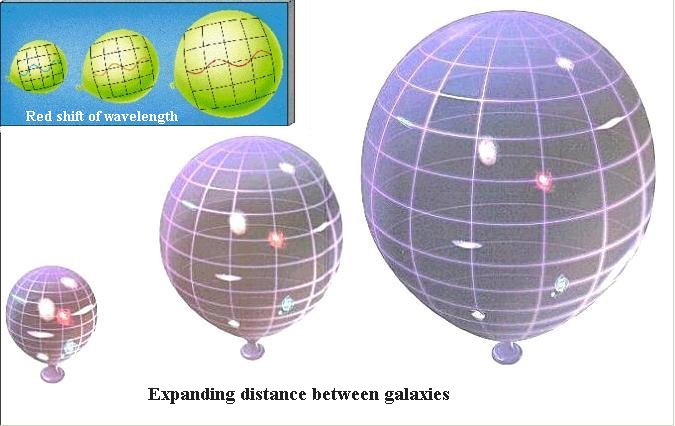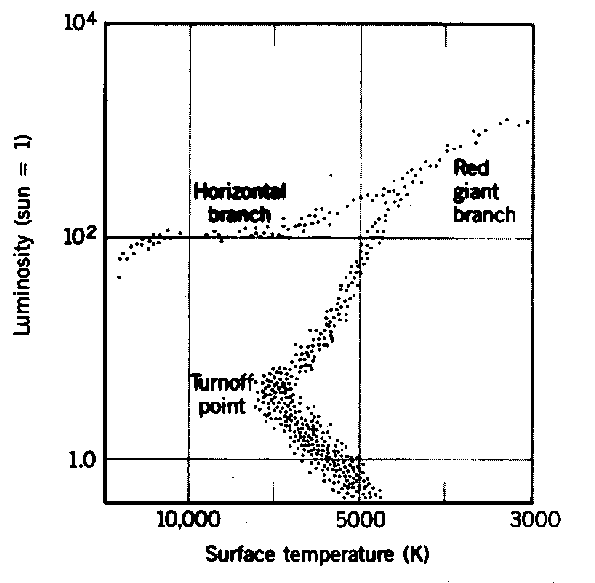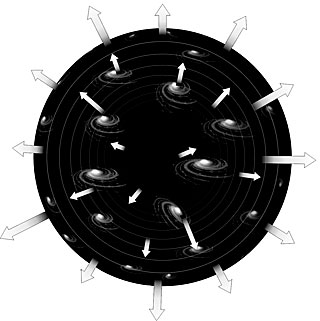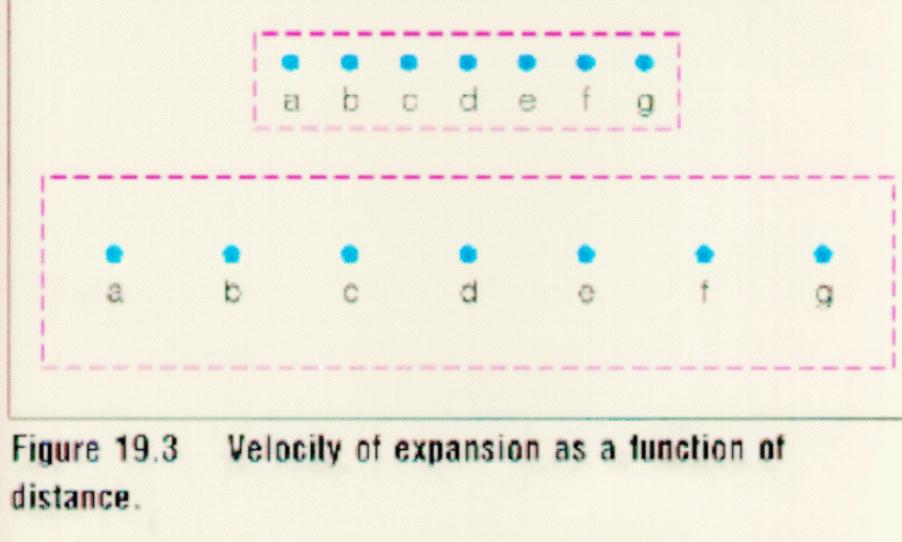 |
Hubble's Law and the Expansion of the Universe |
 |
Hubble's Law and the Expansion of the Universe |
The current best estimate for the age of the Universe is 13.7 billion years
This has the potential of being
annoying since there are stars which may be older than this. The ancient star
clusters known as globular clusters:

|
Globular clusters are ancient star clusters composed of tens of thousands of stars to millions of stars. They are found in the halo of our Galaxy and represent among the oldest of the known stars in our Galaxy. Using stellar evolutionary arguments (see the Hertzsprung-Russell diagram to the right (and Astronomy 122), we can infer the ages of the stars in a globular cluster. |
 |
 ExplosionA natural explanation is that an explosion occurred and that we are at the center of the Universe. Consequently, the galaxies are flying away from us in all directions and that the ones with larger initial kicks are now farther off. |
 Uniform ExpansionThe current preferred explanation is that the Universe expands uniformly (with no center). In this scenario, any observer in the Universe sees essentially the same thing and all observers find the same Hubble's Law! |
Initially, the choice was not obvious as to which of the above was correct. However, by this time people were loathe to believe that we occupied a preferred spot in the Universe. The Hubble law was interpreted as an indication of the uniform expansion of the Universe.